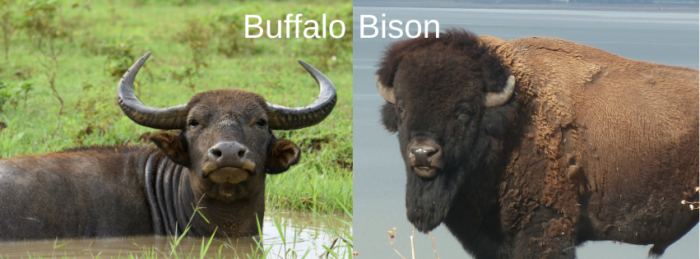20 August 2024
Bison or Buffalo? Discovering Antelope Island’s Majestic Giants
by Discover Davis
When people hear the words “bison” and “buffalo,” they often think of the same animal. However, these terms actually refer to two distinct species. Understanding the differences between them can offer fascinating insights into North American wildlife. Here in Davis County we’re lucky to have one of the oldest and largest publicly owned American bison herds in the country.
Differences Between the Bison and the Buffalo
Physical Characteristics:
Bison: Native to North America and Europe, bison are characterized by their large hump over the front shoulders, a thick fur coat, and a beard. They have shorter, more curved horns.
Buffalo: Native to Africa and Asia, buffalo (such as the African Cape buffalo and the Asian water buffalo) lack the shoulder hump and beard. Their horns are generally longer and less curved compared to bison.
Habitat:
Bison: These animals are typically found in the grasslands, prairies and river valleys of North America. The American bison, in particular, roamed the Great Plains in massive herds.
Buffalo: African buffalo are found in savannas, swamps and floodplains, while Asian water buffalo are commonly seen in wetlands and marshes.
Behavior:
Bison: Known for their nomadic and grazing behavior, bison move in herds and can cover large distances in search of food.
Buffalo: Both African and Asian buffalo are known for their social structure and can be found in herds as well. However, African buffalo are known to be more aggressive and unpredictable.

History of Bison on Antelope Island
Antelope Island State Park, located in the Great Salt Lake, is home to a significant population of American bison. The history of bison on this island is a testament to conservation efforts and the resilience of this majestic species.
In 1893, twelve bison were introduced to Antelope Island as part of an effort to preserve the species. The American bison was close to extinction due to overhunting and habitat loss. Over the years, the bison population on the island has grown and thrived making it one of the most successful conservation stories in North America.
Today, the island is home to around 500-700 bison, depending on the season and annual roundups. These roundups are crucial for managing the herd size and ensuring the health of the population. Visitors to Antelope Island State Park can witness these magnificent creatures in their natural habitat, offering a glimpse into the past when bison roamed the Great Plains in vast numbers.
In conclusion, while bison and buffalo are often confused, they are distinct species with unique characteristics and habitats. The history of bison on Antelope Island State Park highlights the importance of conservation efforts and provides a living reminder of the rich natural heritage of North America.
Bison Fun Facts
- Bison will eat approximately 40 lbs of grass a day
- Bison can run faster than horses
- Bison are nearsighted
- You can judge a bison’s mood by its tail — down is calm and happy, up is mad!
- The American bison is the official mammal of the United States
)


